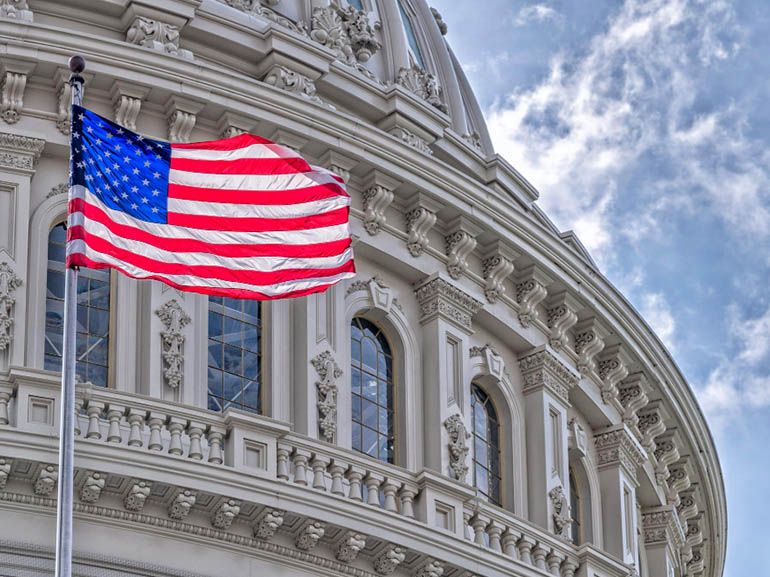US Markets Rise as Apple Leads Tech Surge Amid Tariff Threats
The US equity markets displayed resilience on Wednesday, 6 August, and Thursday, 7 August, with all three major indices posting solid gains despite escalating trade tensions. Technology stocks led the charge, driven by a powerful Apple rally that pushed the Nasdaq composite near record territory, demonstrating investors' continued confidence in corporate fundamentals over geopolitical uncertainties.

TL;DR
Markets Rally Despite Tariff Fears: US stocks rose on August 6–7, shrugging off Trump’s 100% tariff threat on foreign chips.
Apple Boosts Tech Surge: Apple’s $100B U.S. manufacturing pledge drove a 6% stock jump, lifting the Nasdaq.
Indices Climb: All major indices posted gains, with tech leading and jobless claims in focus.
US Markets Shrug Off Trump's 100% Semiconductor Tariffs
On Wednesday, 7 August, President Donald Trump threatened to impose a 100% tariff on foreign semiconductor companies.
However, despite the announcement introducing fresh uncertainty into markets, stock futures continued to rise despite these aggressive trade policy measures.
The proposed semiconductor tariffs represent a significant escalation in trade rhetoric, targeting a critical global technology supply chain component.
Nonetheless, markets largely absorbed this news without considerable disruption, suggesting that investors may be developing increased tolerance for trade policy announcements.
Apple's $100B US Investment Drives 6% Stock Surge
Apple pledged an extra $100 billion to U.S. manufacturing, raising its total domestic investment to $600 billion over four years. The move followed a White House plan to impose 100% tariffs on imported chips, pressuring firms to produce in the U.S. CEO Tim Cook announced new deals with American semiconductor and speciality material suppliers to expand advanced manufacturing.
While Trump praised Apple’s “return home,” analysts warned that reshoring iPhone production remains a long-term challenge.
Still, Apple’s stock jumped nearly 6% as investors bet the investment would help avoid harsh tariffs and safeguard U.S. market access.
Dow, S&P 500, and Nasdaq Post Strong Weekly Gains
US stock markets delivered another strong performance on Thursday, 7 August 2025, with the Dow Jones Industrial Average, S&P 500, and Nasdaq Composite all posting meaningful gains. The S&P 500 closed up 0.73% after a robust Wednesday session, while the technology-heavy Nasdaq benefited significantly from Apple's performance. All three major indices are now tracking for positive weekly gains, suggesting investor optimism despite external headwinds.
Weekly Jobless Claims Data in Market Focus
Today’s (Thursday) economic calendar places initial jobless claims at the forefront of trader attention, with employment data becoming increasingly crucial for market direction. This focus on labour market indicators follows recent disappointing jobs reports that led to personnel changes at the Bureau of Labour Statistics. The employment figures will provide critical insights into US economic health and could significantly influence Federal Reserve policy expectations in the coming months. (Source: Investing.com)
Key Factors Driving Next Week's Market Direction
Several key factors might influence market direction in the coming sessions. The ongoing evolution of trade policy, upcoming economic data releases, and continued corporate earnings results will drive volatility across various asset classes. The current environment emphasises the importance of monitoring both macroeconomic trends and company-specific fundamentals when making trading decisions.
Conclusion
The US equity markets have showcased surprising resilience in the face of heightened trade rhetoric, particularly surrounding semiconductor tariffs.
Apple’s strategic investment in U.S. manufacturing and the broader technology sector's strength have reassured investors, shifting focus from policy risks to corporate performance.
With key economic data and Fed decisions on the horizon, markets are likely to remain sensitive but optimistic in the near term.
Strategic attention to fundamentals and macroeconomic indicators will be vital for investors navigating this evolving landscape.
*Past performance does not reflect future results.
FAQs:
Why did the markets rise despite tariff threats?
Investors appear to be pricing in strong earnings and corporate fundamentals, particularly in the technology sector, over short-term geopolitical disruptions.
What is the significance of Apple’s $100 billion U.S. investment?
Apple’s pledge to bolster domestic production may help it avoid new tariffs and maintain regulatory goodwill. It also signals long-term strategic positioning amid global supply chain shifts.
How did major indices perform?
All three major indices, Dow Jones, S&P 500, and Nasdaq, posted solid gains, extending their weekly winning streaks. The Nasdaq was especially boosted by Apple’s nearly 6% stock jump.
What role did employment data play?
Initial jobless claims data are closely watched as a gauge of economic strength. Recent labour market volatility makes such reports increasingly critical for forecasting Fed policy.
What sectors outperformed the market?
Technology was the clear outperformer, led by Apple and bolstered by investor confidence in sector resilience despite policy headwinds.





